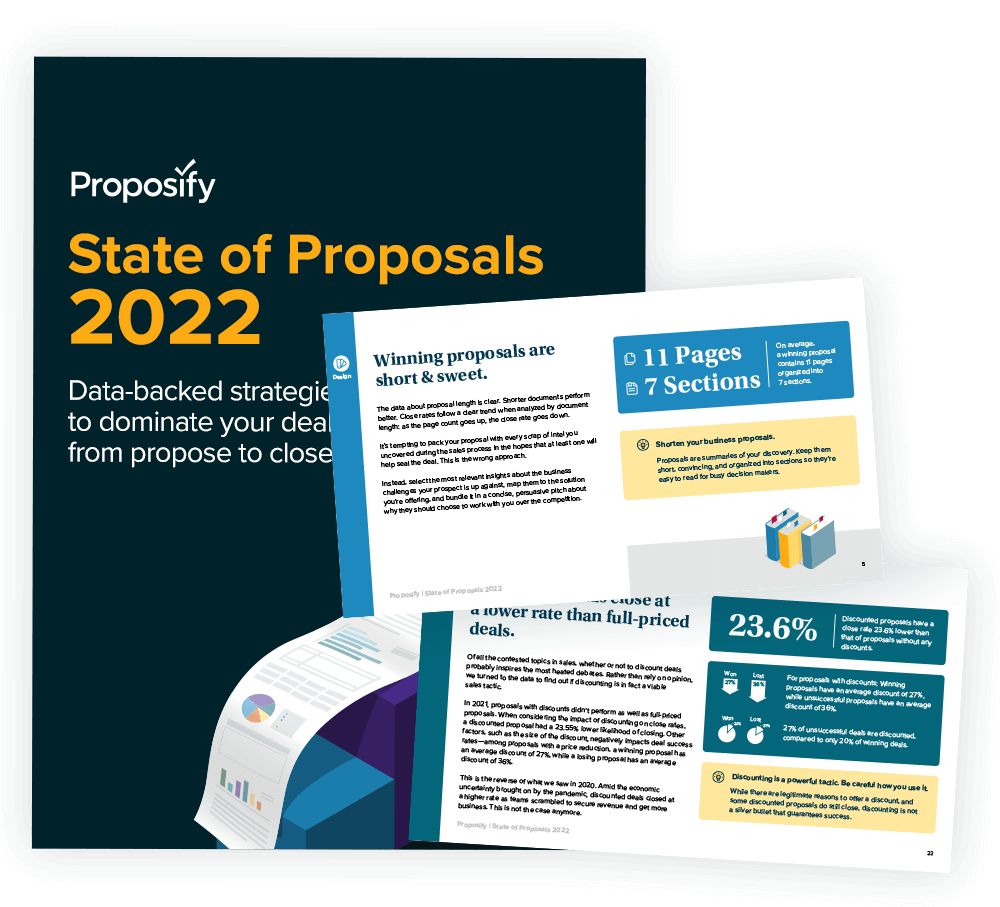Proposal terms and conditions are the seat belt to your car ride, the helmet to your bike, the screen protector to your iPhone X. Without them, you may have won the deal, but you’re at risk of shattering your business and your business relationships if anything goes off the rails.
By outlining details like what’s going to happen when, who’s responsible for what, how long it’s going to take, what happens if there are changes, and how much it’s going to cost, terms and conditions remove any ambiguity about the execution of a project. That way both you and your clients are on the same page before the work starts, and it reduces the risk of conflict over differing expectations.
You need to be explicit so you’re protected later when the client complains that they expected four versions of a logo design when the budget says it only includes two, or they’re refusing to pay their bill because they think you haven’t finished the project yet.
While proposal contracts can cover lots of things, here are the basics you should be sure to address:
- A general overview of who is hiring whom, what they’re being hired to do, the length of the contract, and the cost.
- What both parties agree to do, with respective responsibilities outlined.
- The specifics of the project and what is/isn’t included in the scope.
- What happens when/if people change their minds or cancel.
- An overview of liabilities and other legal points.
Some businesses don’t like to include terms and conditions with a proposal that the prospective client hasn’t yet signed. Instead, they include it as part of a statement of work (SOW) that’s delivered after the proposal’s been signed and the deposit paid. There’s no right or wrong approach, just be sure you’ve covered your butt before you start one second of work.
Define any words that might be unclear
It’s critical that everyone involved with the project can easily understand your terms and conditions, which can be tricky when it comes to some legal documents. Define any words that might be confusing to your sales lead before getting into the detailed terms and try to keep the language as simple as possible. Check out this post for some tips on plain language writing.
Price and payment
Your proposal terms and conditions section should state the final price, outline a payment schedule that the client has to follow, and detail anything that’s not included in the price, like taxes or items not covered in the scope of the project.
You should also address what happens if the client doesn’t pay you according to the agreed-upon payment schedule.
Privacy
A privacy statement gives your clients confidence that you’re not going to share, sell, or rent their competitive information to a third party. Be sure to outline in your proposal terms and conditions how your company will protect any of their information you store on or offline.
Intellectual property
If you create something for your client, the client will generally want ownership of such intellectual property (IP). A standard clause should outline that you assign all rights, title, and interest of any intellectual property developed during the project back to the client. You should make clear that the IP does not become the client’s until their invoice is paid in full.
Sharing work
If you like to show off client work in case studies, online portfolios, or submissions to awards competitions, etc., you need to outline in your contract that you reserve the right to use that work. Most clients will oblige, but there may be a few who for competitive or security reasons don’t want their work shared so be sure to go over this clause with them.
Changes
Life is uncertain, imprecise, and fleeting. And so are clients.
Something may change once you’ve already started on the project (doesn’t it always?), so you need to be clear with the client what the plan of attack is for changes before anything actually happens.
Define how change requests get made, who is responsible for them, how it gets handled from a budget and timeline perspective, and what the implications are for the project overall.
Getting this all out in the open from the very beginning will help manage expectations and keep the project focused on its objectives.
Cancellation policy
If a client ends up cancelling the project after they’ve already signed the proposal and maybe after you’ve started the work, you need to be protected. Outline how much notice is required to cancel the contract and what the implications are, like whether or not the deposit or other fees that have already been paid are refunded.
Kill fee/delay fee
You’ve probably experienced this before when somewhere in the middle or near the end of a project: the client suddenly goes quiet.
You email, call, and leave voicemails — nothing. There’s no response, and you can’t move the project forward without speaking to the client.
One year later the client emails you, “Hey, sorry for the delay. We finally have content finalized (or whatever was holding back the project). When can we launch?” Insert groan, eye roll, and account manager panic here.
So make sure your contract includes what happens if the client delays the project, and how much they’ll need to pay to resurrect it if it goes dormant past 30, 60, or 90 days.
A client can’t get you to commit your resources to a project, abandon it halfway through, then show up months or years later expecting you to drop what you’re doing and carry on as if nothing’s changed. This needs to be clearly spelled out in your terms and conditions from the beginning.
Errors and omissions
Your proposal contract should cover that your company can't be sued for any errors you make, actions you fail to take (omissions), or delays to the project that may lead to lost profits or third party damages. Some clients may object to this clause, but it’s important to have some coverage in the event of any mistakes or oversights.
Hire a lawyer
To really make sure your butt, your company’s butt, and anyone’s butt who works with you is protected, have a lawyer draw up a standard proposal contract for you to use. Or, at the very least, have one look yours over to make sure you’re not missing anything critical in your terms and conditions and that you’re following the laws of your particular country, state, or province.
The Bottom Line
It’s a good idea to go over the terms and conditions section with your client—don’t assume just because they signed off that they read them and fully understand the implications. Things can get messy later if they say, “Oh, I didn’t understand that part”, or “That’s not clear that’s what you meant.” Make sure there is no room for interpretation.
Don’t start any work until the client has signed the contract or SOW with the terms and conditions, and paid the deposit. They may try to persuade you to start early with their enthusiasm to get going, a looming deadline, and a promise that they’re ‘waiting for the cheque to be signed’. And you may feel that starting the project right away is a sign of goodwill on your part, but DON’T DO IT.
If the client can’t commit to resources on their end but expect you to commit your resources without any guarantees, it could be a red flag to further issues down the road. This is business and contracts protect both you and your clients.




